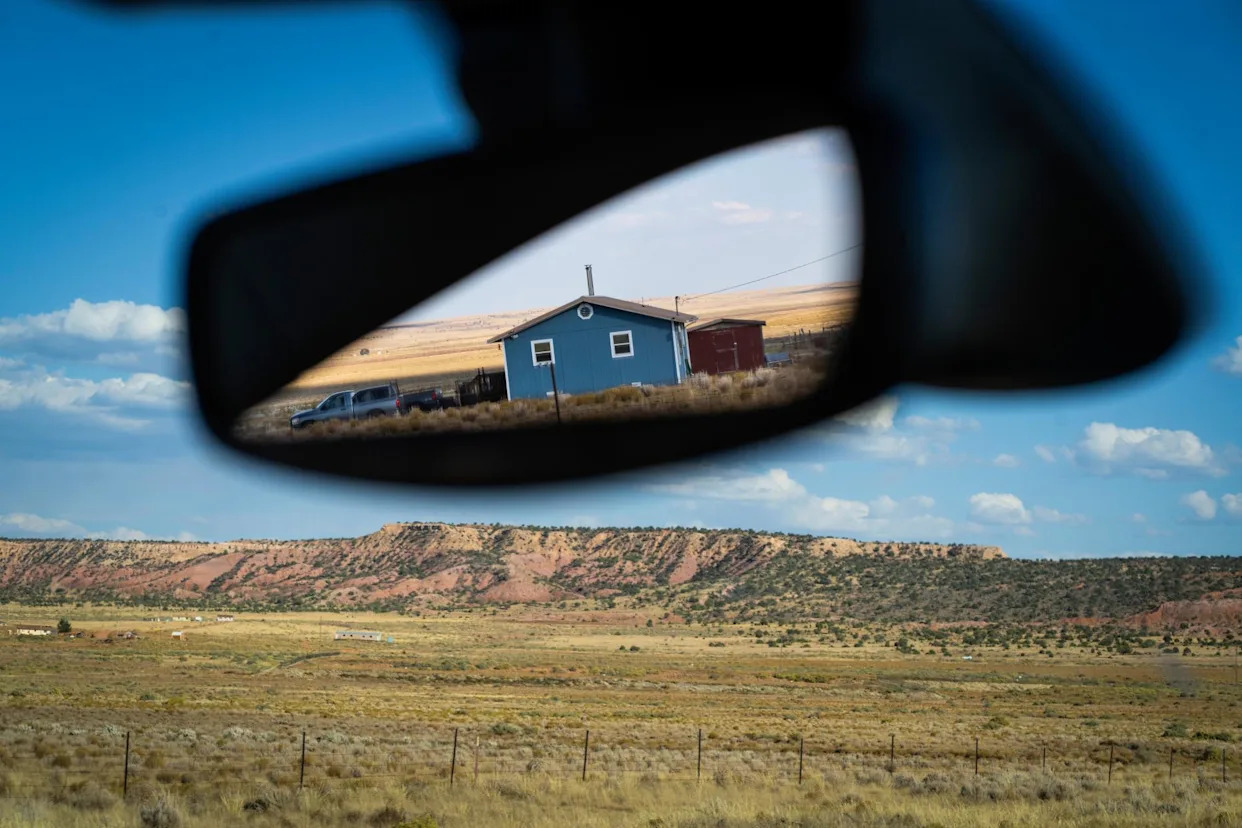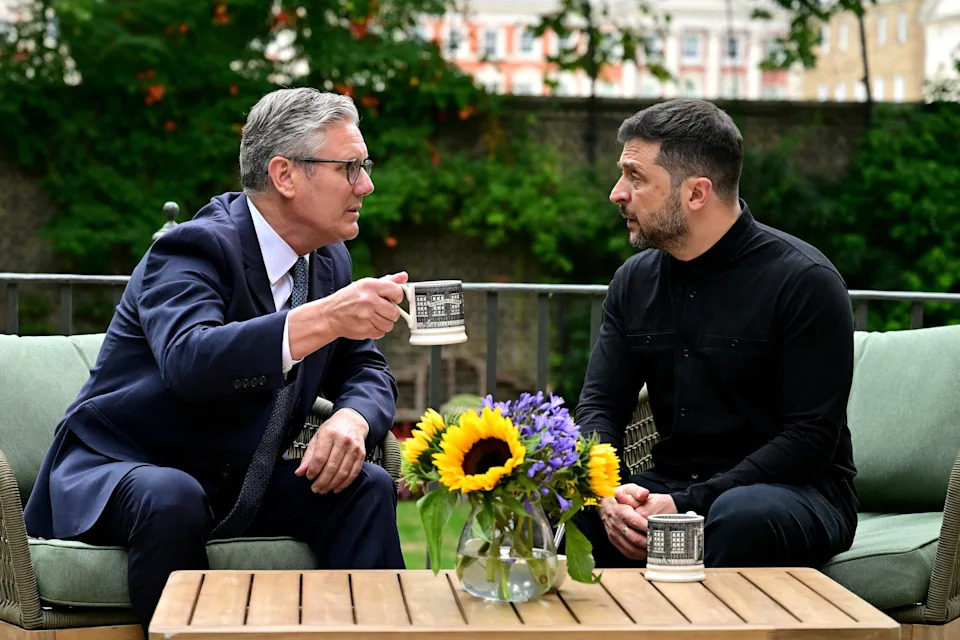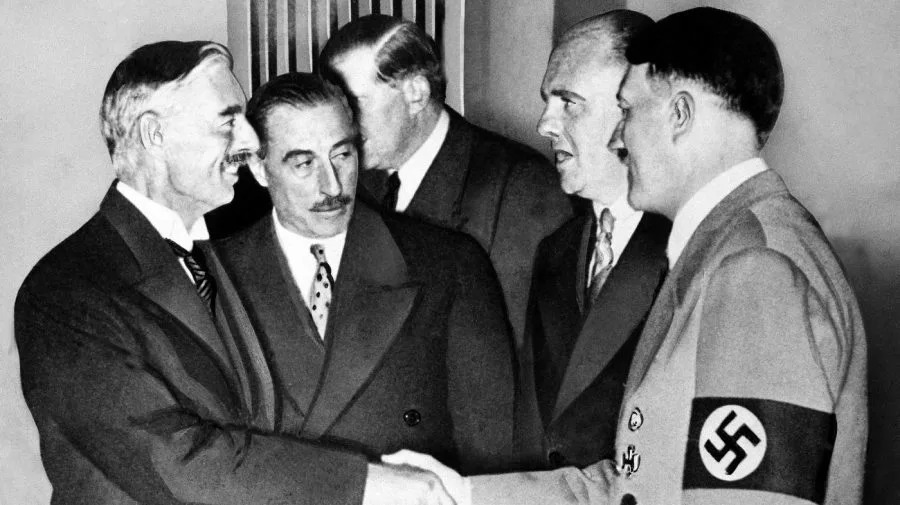
Since Republicans last month slashed over $1bn in funds designated for public broadcasting, non-commercial TV and radio stations around the country have been reeling.
The cuts led the Corporation for Public Broadcasting (CPB), the nearly 60-year-old organization that has long supported local TV and radio stations across the US, to shut down operations entirely, leaving more than 1,500 local stations nationwide without a critical source of income.
For rural radio stations that rely heavily on federal grant and matching funds – and that are often the only sources of free and reliable programming in their regions – the consequences are especially dire. Often, these stations are residents’ only reliable avenue for not only news and cultural programming, but also local health and public safety information, including emergency alerts.
To understand what this programming means to rural Americans and the hardships communities could face if broadcasts went quiet, the Guardian spoke to two radio stations that serve distinct populations.
Here is what they shared.
Reaching Spanish-speaking farm workers in rural Washington
Wildfires are a frequent threat in Yakima county, Washington. Rural, hot and dry, the agricultural region can face days on end of poor air quality – an occupational hazard to the thousands of farm workers who work outside, many of whom exclusively speak Spanish.
National broadcasters like NPR put out emergency announcements in English, but their information, about an evacuation or unsafe breathing conditions, may go unheard by a Spanish speaker.
The local public radio station Radio KDNA has found a way to combat that gap. Built specifically for the region’s Spanish-speaking farm workers in this county where more than half of the population identifies as Latino, the station has developed a system in which DJs translate the English emergency notices into Spanish – live on the air. It’s one of many ways the station, which its director of operations, Elizabeth Torres, says is the only 24-hour Spanish-language public broadcaster in the region, meets the needs of its unique listener base.
“Over the years, it has developed a sense of trust with the community,” Torres said.
It’s not the only public service Radio KDNA provides. In operation since 1979, the station runs programs focused on public health, highlighting Spanish-language clinics and vaccine drives; occupational health, with guests speaking to the specific concerns of people who work outside and on farms; education, featuring presenters from the local community college; and children’s entertainment, designed explicitly for the many parents in the community juggling work and childrearing.
Every week, the Yakima Valley Farmworkers’ Clinic goes on the air for an hour to discuss the services they provide, Torres said. Community health workers will share diabetes prevention information. Sometimes, doctors come on as guests to discuss heart disease, or the importance of maintaining regular flu and Covid vaccinations. They even ran a Spanish-language special on long Covid. “We’re focused on information that will help our community make better decisions,” Torres said.
The station produces its own news segments three times a day – two of which are entirely live. In today’s dynamic political environment, these broadcasts are especially valuable for immigrants, who face a daily barrage of information and misinformation about raids and deportations and need help deciphering fact from rumor. KDNA has also partnered with an immigrant services organization that provides legal advice and detention tracking services.
“We don’t put out any information on Ice until it’s verified,” Torres said. “We’re trying to minimize misinformation.”
Considering the lifestyle and literacy rates of its listener base, KDNA’s broadcasts – and audio as a medium – are designed to be accessible. “You can tune in and out as you’re working or as you’re driving,” she said. “All of our programming is developed in a way that people will understand.”
Running such an operation is not cheap, and Torres says that federal funding has played a huge part in the station’s ability to do this work, with 40% of KDNA’s revenue coming from the CPB on average every year. The station already operates on a tight budget, Torres said, with staff members wearing multiple hats. The news director moonlights as the audio tech if the regular engineer is unavailable; the underwriter (who coordinates paid sponsorships) is also the building manager.
She fears that the funding cuts could dramatically restrict what is feasible in terms of output. KDNA will probably need to reduce staffing, cut back on community events, and limit the external broadcasts they pay to air, like NPR’s Spanish-language shows, she said. Her biggest concern is if live programming is limited, there may not be an on-air DJ to translate critical alerts.
“Families that need to evacuate, they might not get the message,” she said. “That is going to have a real impact.”
‘The only voice available’ in Navajo territory
Listening to the radio was a big part of Richard Grey’s 1960s childhood. He remembers the voices of AM DJs traveling through his house as he got ready for school in the mornings and listening to the BBC when it came on the air every evening. Not many people who lived on Arizona’s rural Navajo nation had television. Radio was how they got information about their community – and beyond. “It brought the world to us,” Grey said.
Today, between limited broadband access and the vast distances residents drive to reach brick-and-mortar resources like libraries or post offices, public radio remains a vital resource for the Navajo nation, which, at over 27,000 square miles spread across three states, is the country’s largest Indian reservation. Since 1989, residents have tuned into KGHR Navajo Public Radio to access everything from Indigenous cultural programming to political commentary to world news. Broadcasting with more than 100,000 watts of power, the station is able to reach almost all residents on the western side of the reservation, which is no small feat in a region defined by challenging geography.
Grey, who has worked with the station since 2011, says that makes it an invaluable service: “Phones can’t go down into a canyon or around a mesa, but radio does.”
In terms of infrastructure, KGHR is bare bones. It shares its facilities with Greyhills Academy, a high school in Tuba City, and is primarily run by part-time contractors. Its only full-time staff member, announcer Keri Blackrock, came onboard a little over one year ago.
But the station’s output is robust. KGHR offers Indigenous cultural programming, including music curated by audio engineer Michael Begay and a Navajo Word of the Day show coordinated by students at the school. It syndicates a wide range of national and international news programs, like Native Voice 1, NPR and the BBC World Service. And it produces its own coverage of local sports games, parades and community events.
“Hearing a community member – and a tribal member – go live on the air is very meaningful,” said Begay, noting that announcer Blackstone is herself Navajo. “The audience can go, ‘It’s one of us, a familiar face, a familiar voice.’”
By his own account, Begay was a floundering high schooler at Greyhills Academy in the mid-1990s when he wandered into the station. Working as a student DJ gave him a sense of purpose, and when he realized that he couldn’t go on the air if he wasn’t at school, his grades started to improve. He suggests that without KGHR, his life would have taken a very different path – and perhaps even been cut short. “I would be a statistic,” he said.
The station also protects public safety. As part of the country’s emergency alert system, it broadcasts vital information about heatwaves, wildfires and floods. For many people on the reservation, KGHR is their only avenue to learn about an evacuation order – like last month, when a wildfire swept across 100,000 acres near the New Mexico border. Knowing rural residents may not have reliable internet or cell service, Blackrock broadcast updates from local tribal police and shared information residents were posting on Facebook on the air.
“It’s our job to broadcast incidents so that the community is kept informed and safe,” said Begay.
Now, this crucial service is under threat. Almost all of the station’s funding comes from federal sources, said Grey, and CPB is KGHR’s main source of revenue. Going forward, they might need to venture into new territory entirely, like hosting live events, airing paid s for sponsors, or creating digital content for paid subscribers. “I don’t believe we’ve ever really asked for donations,” said Blackrock.
Without KGHR, the airwaves will lack Native perspectives on politics and culture, and issues that are underrepresented in the mainstream media, like missing and murdered Indigenous people, will get even less attention. For those reasons, they don’t plan to go off the air – at least, not without a fight.
“Tribal radio stations will continue to serve as vital platforms for preserving Indigenous language and cultural traditions,” said Begay. “Our job is ensuring these aspects remain vital and present for future generations.”






Comments